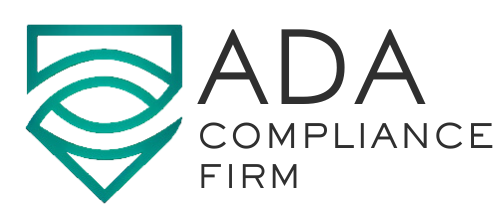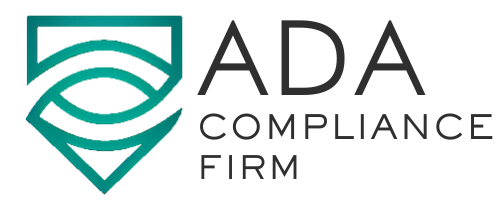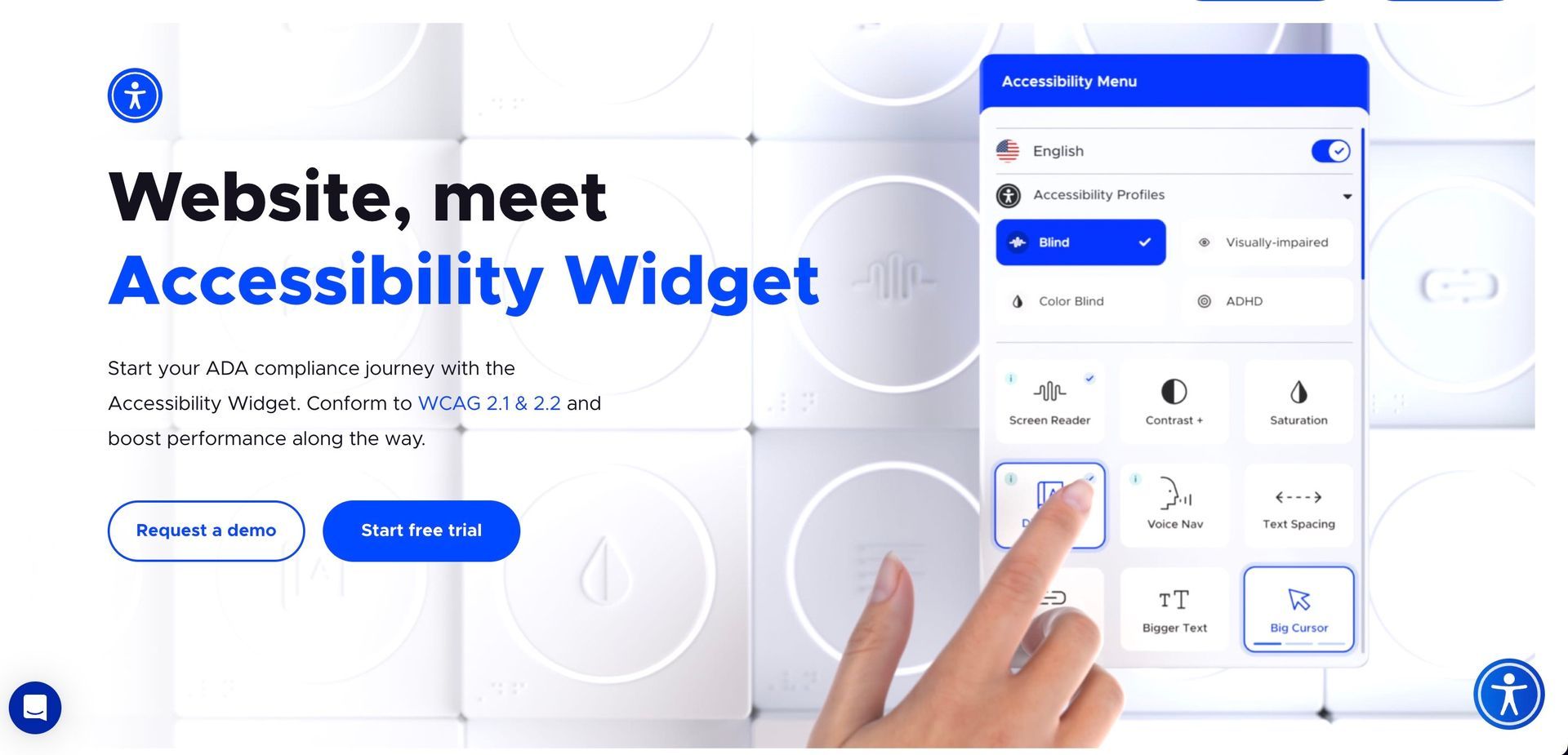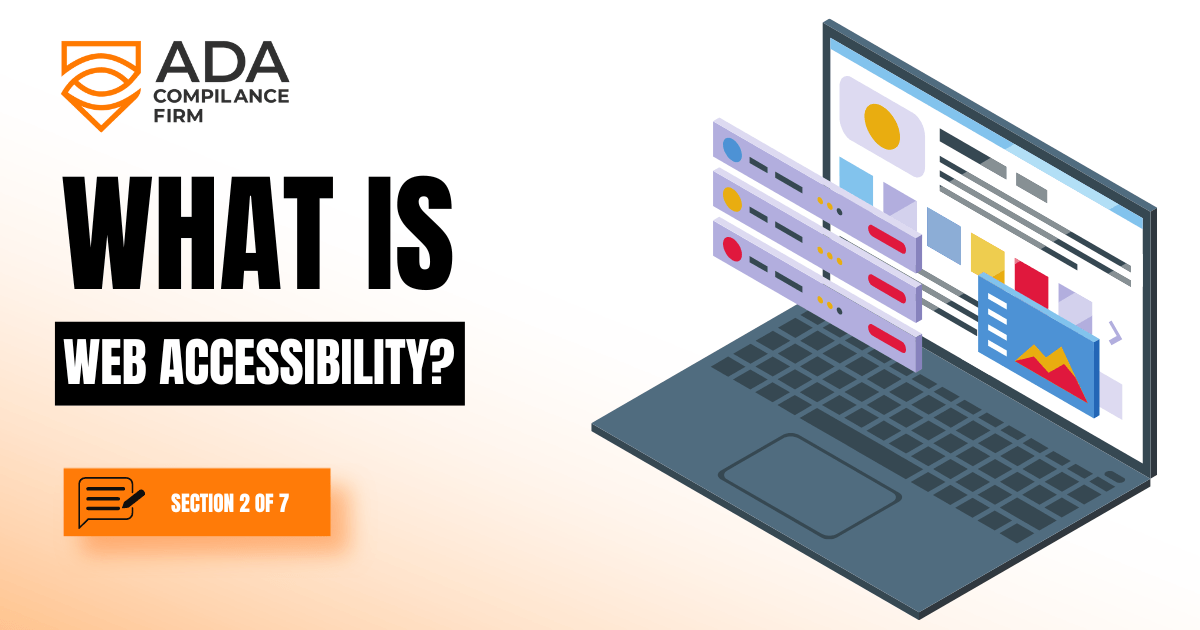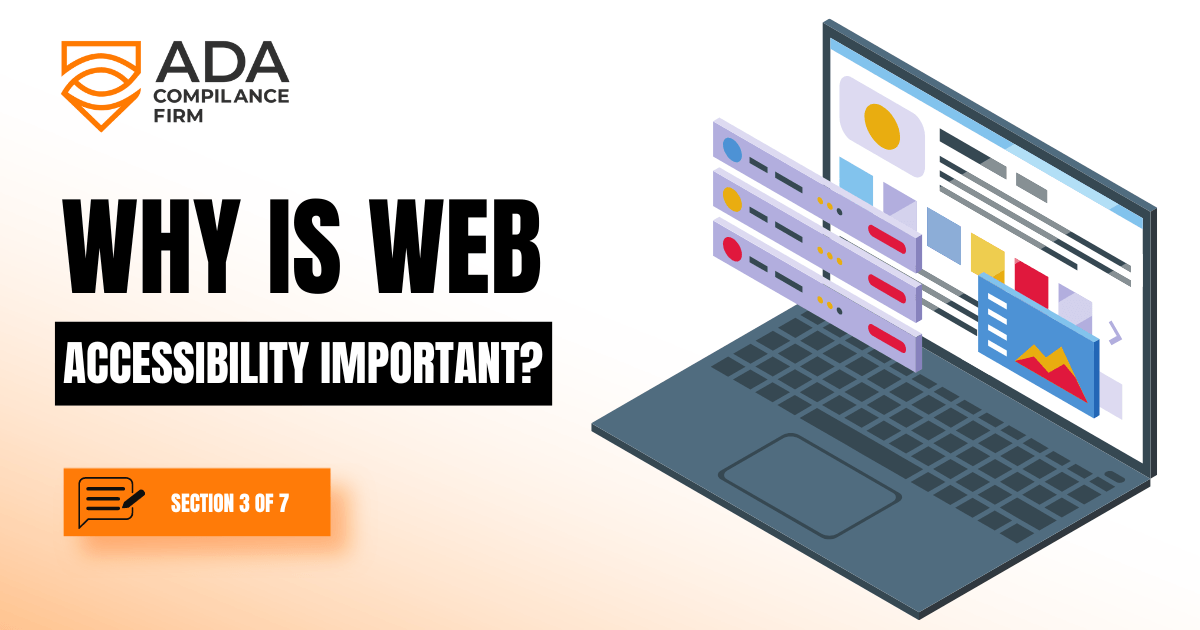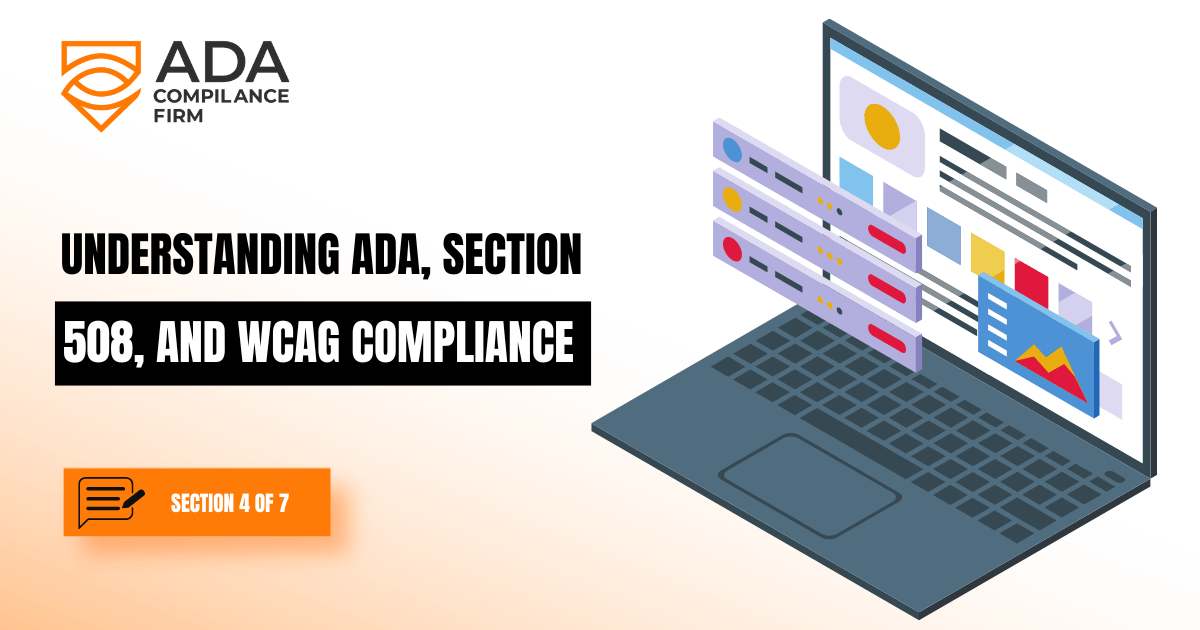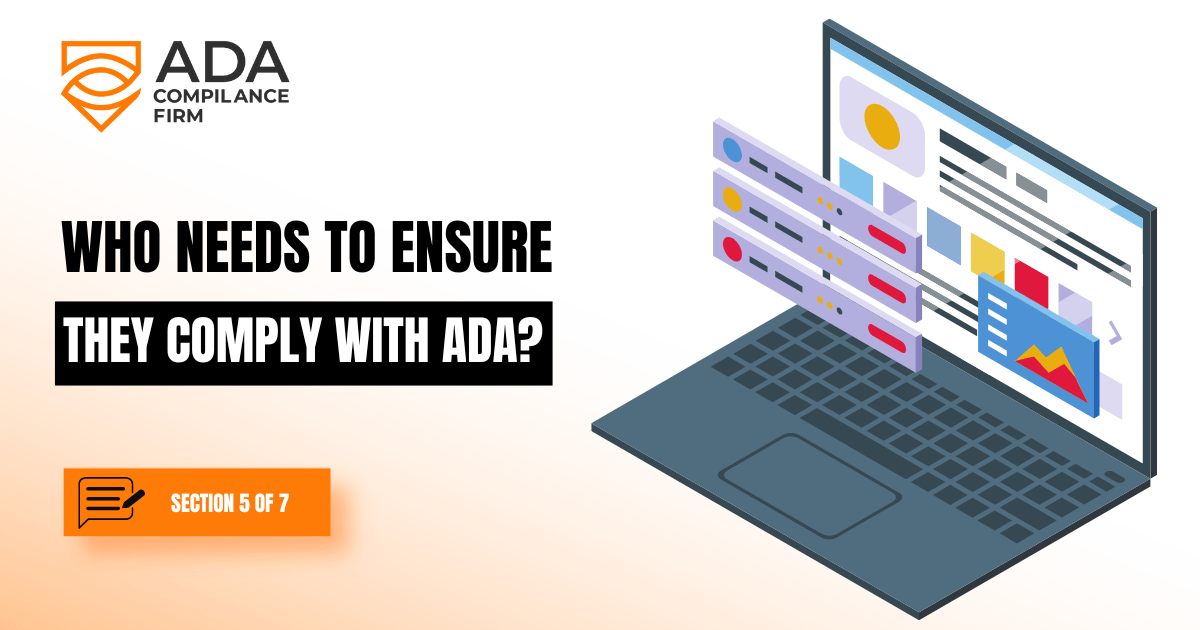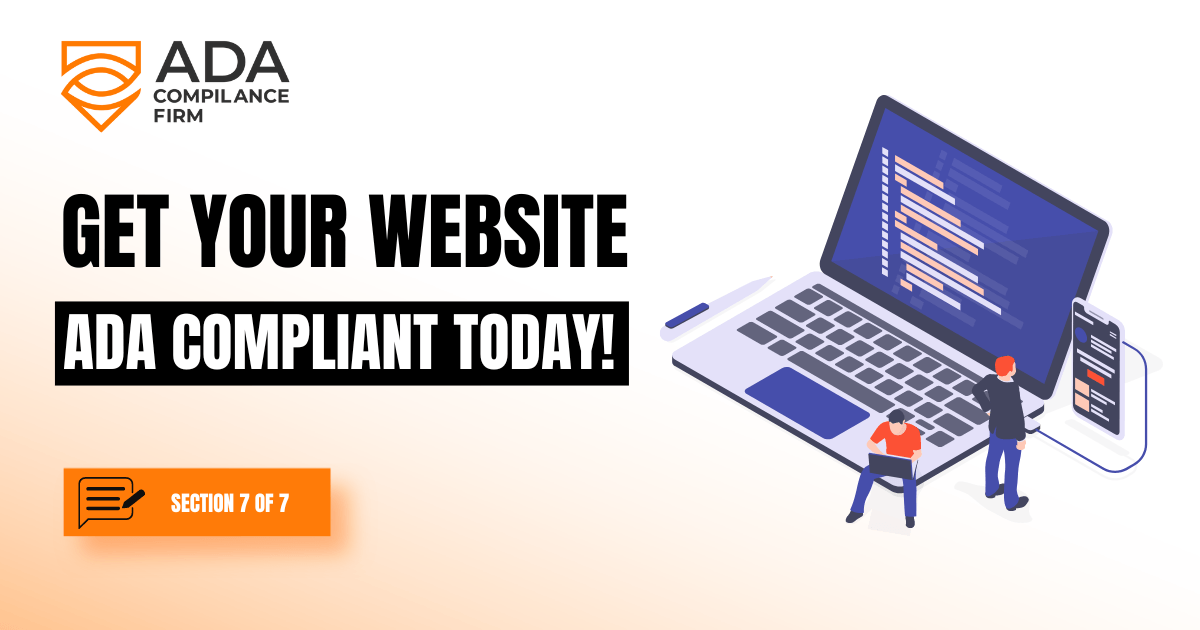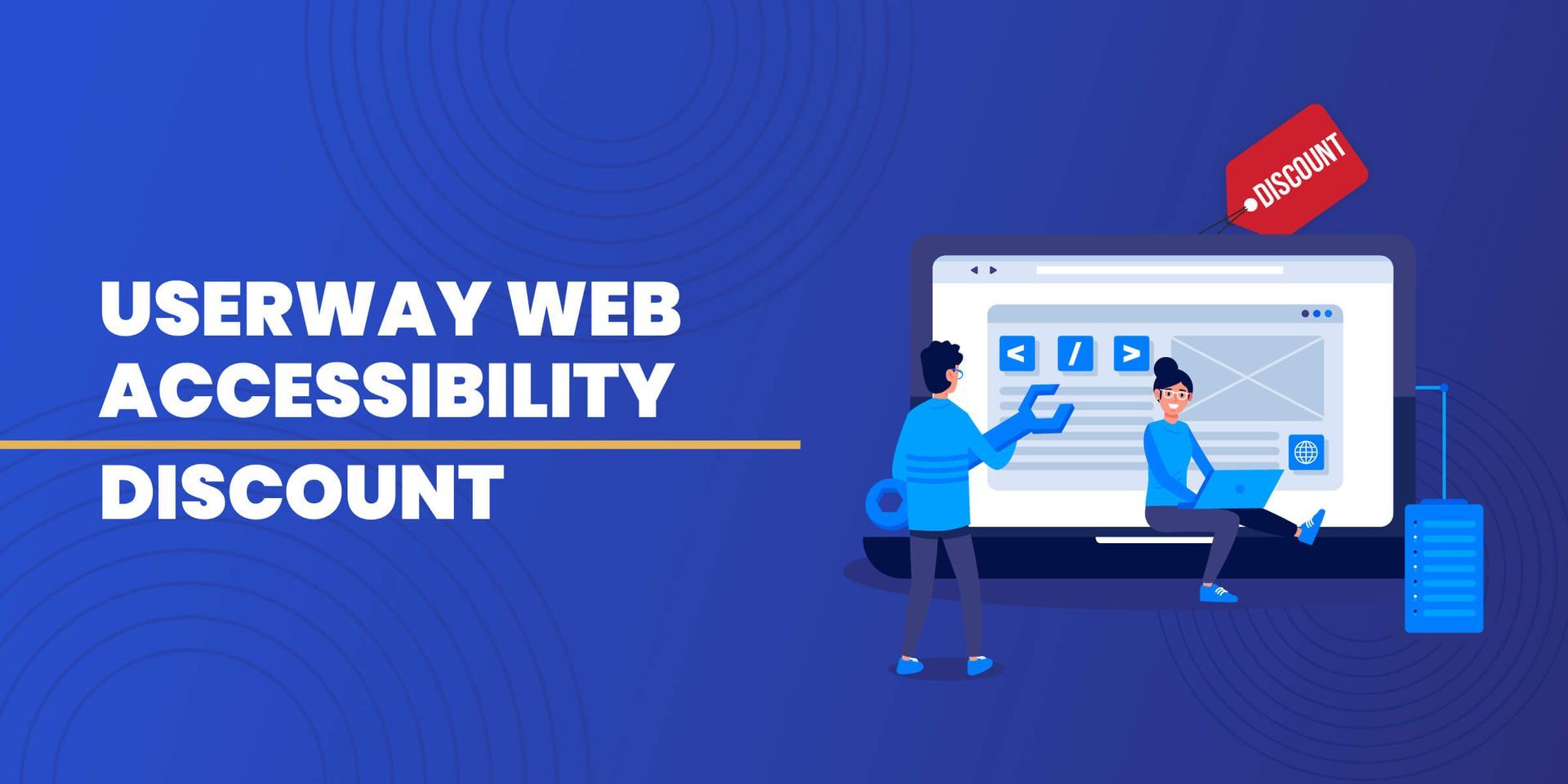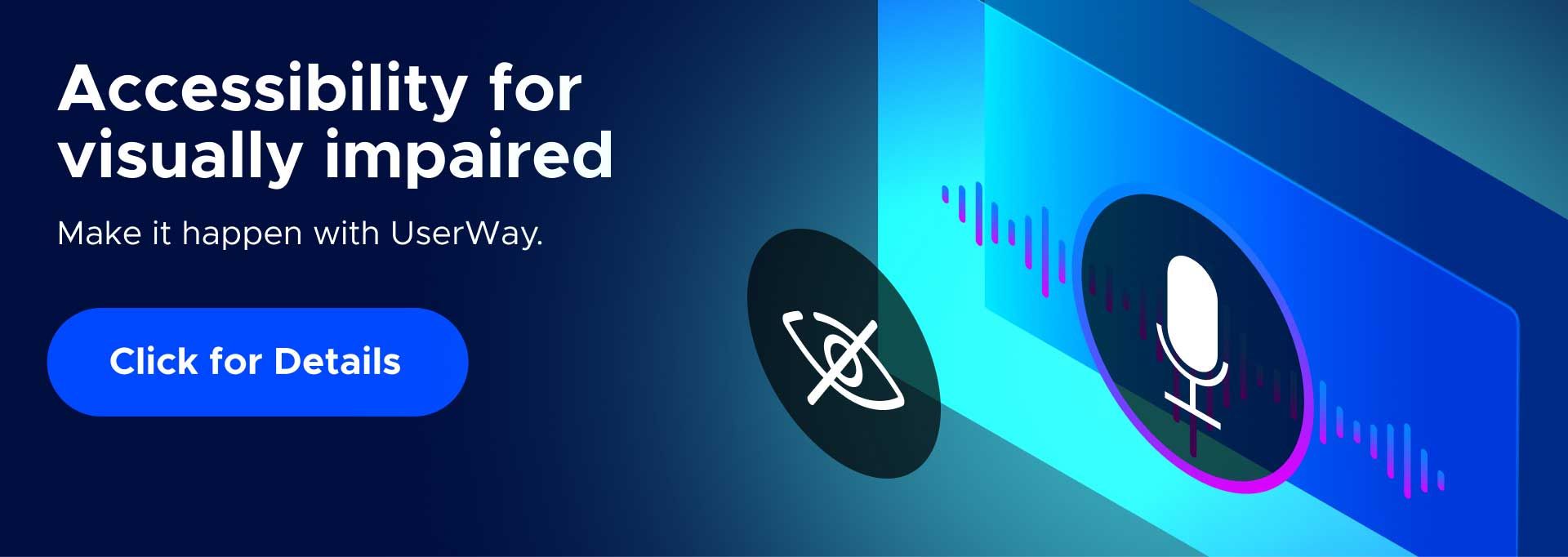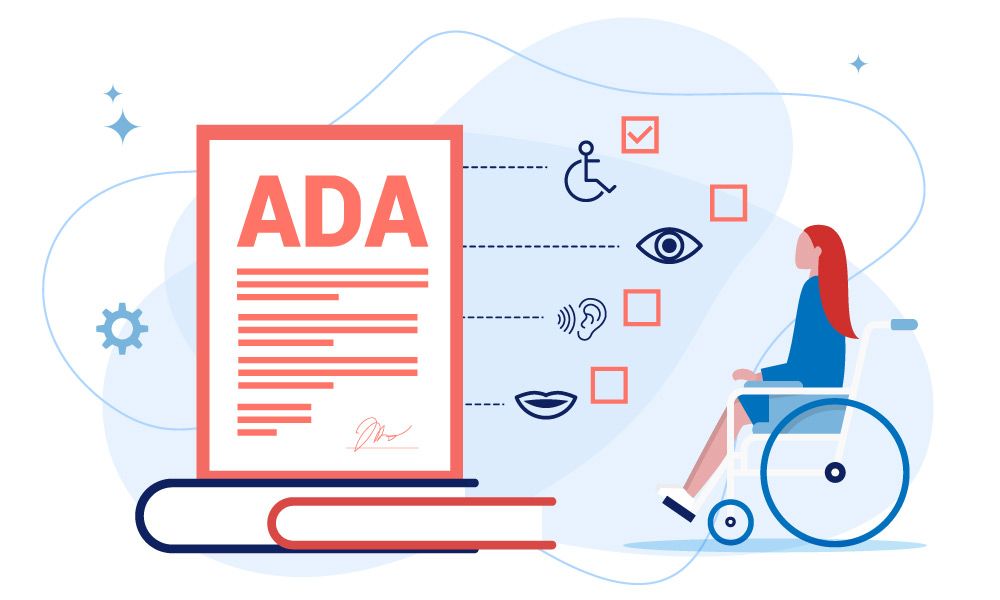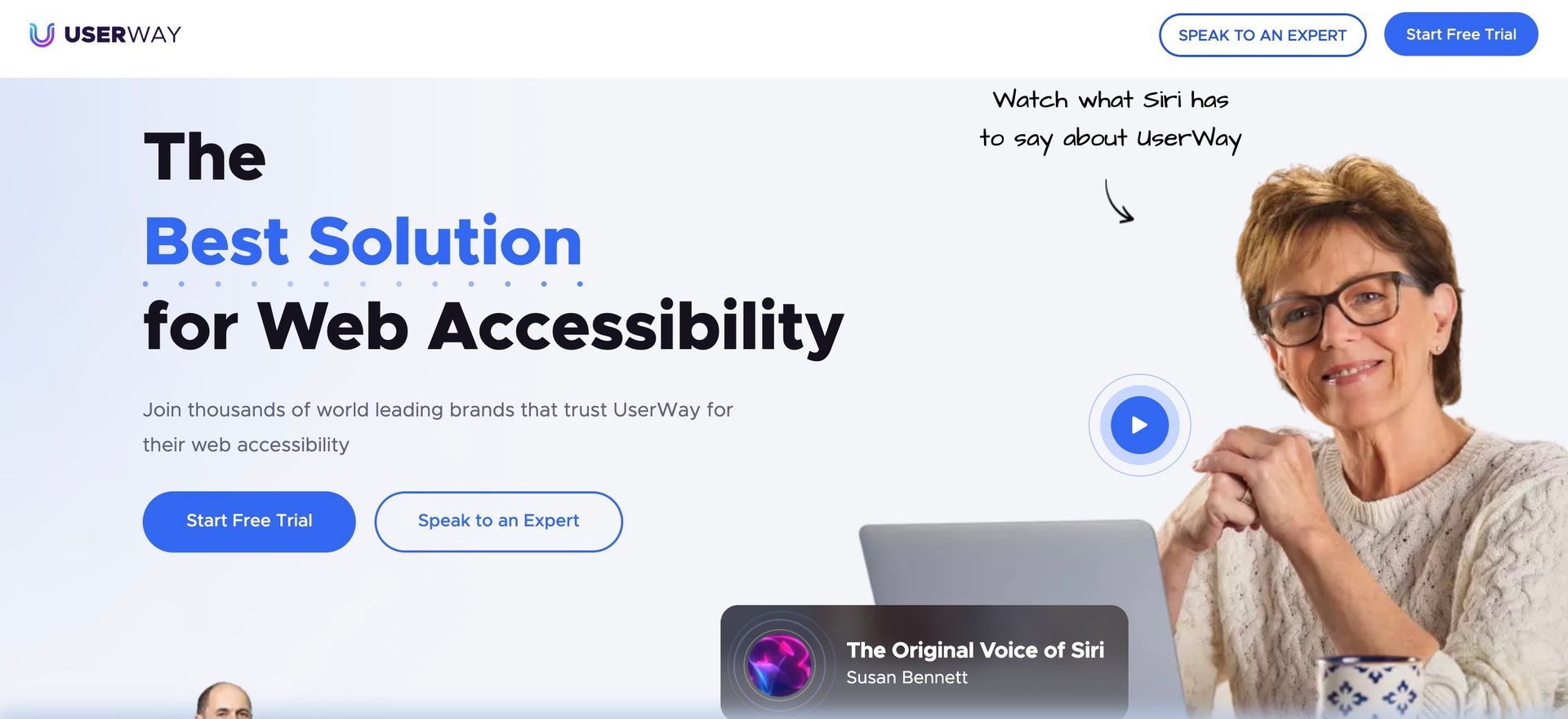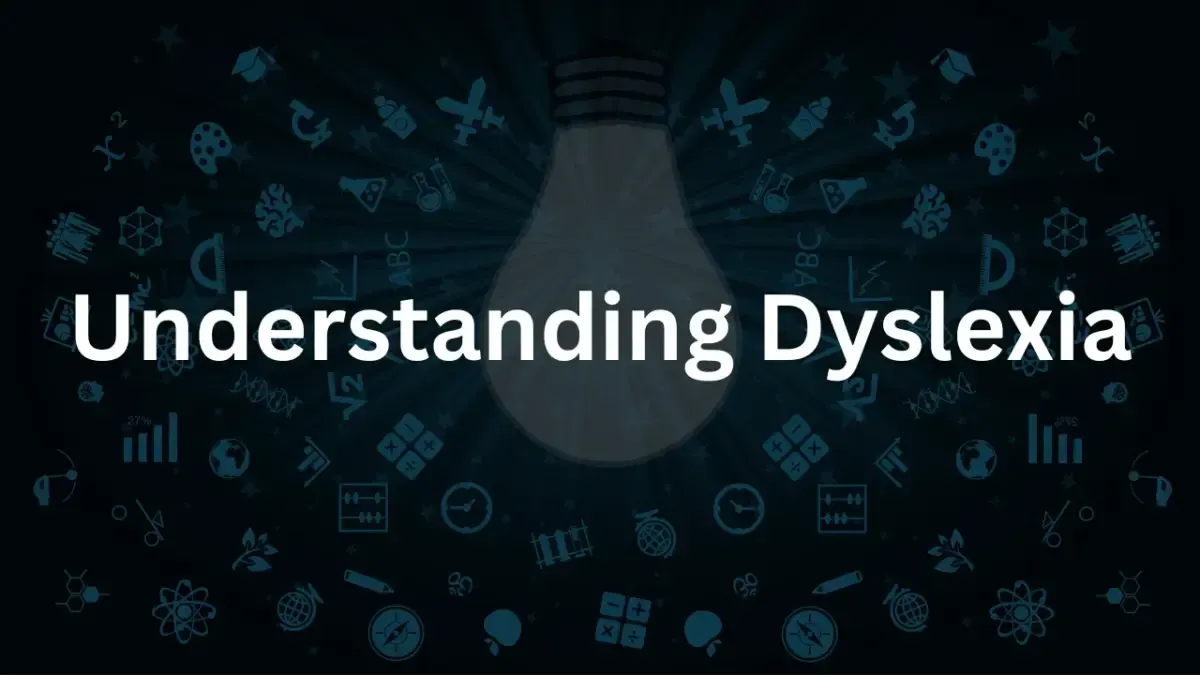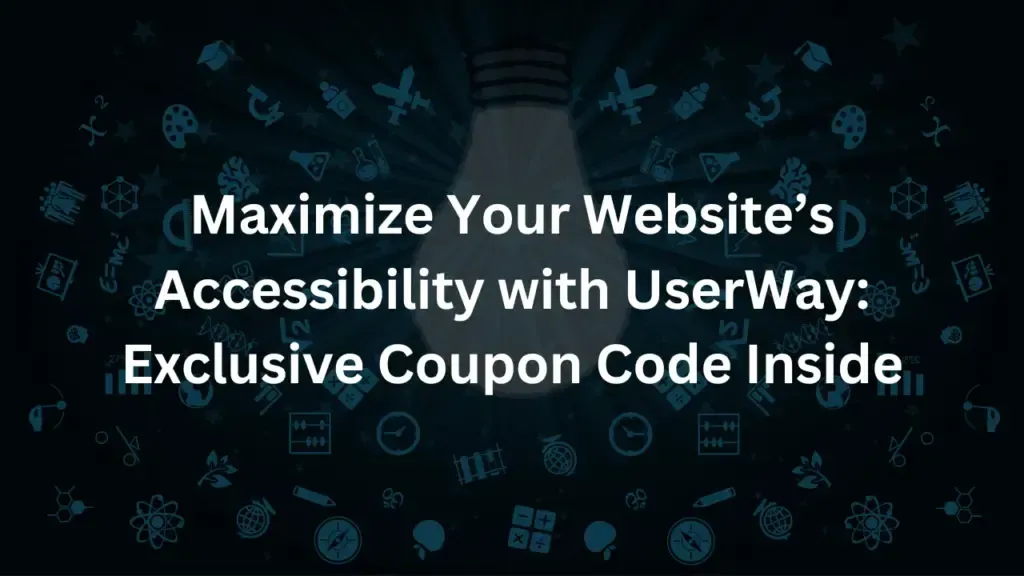The 7 Best ADA Website Compliance Software in 2023
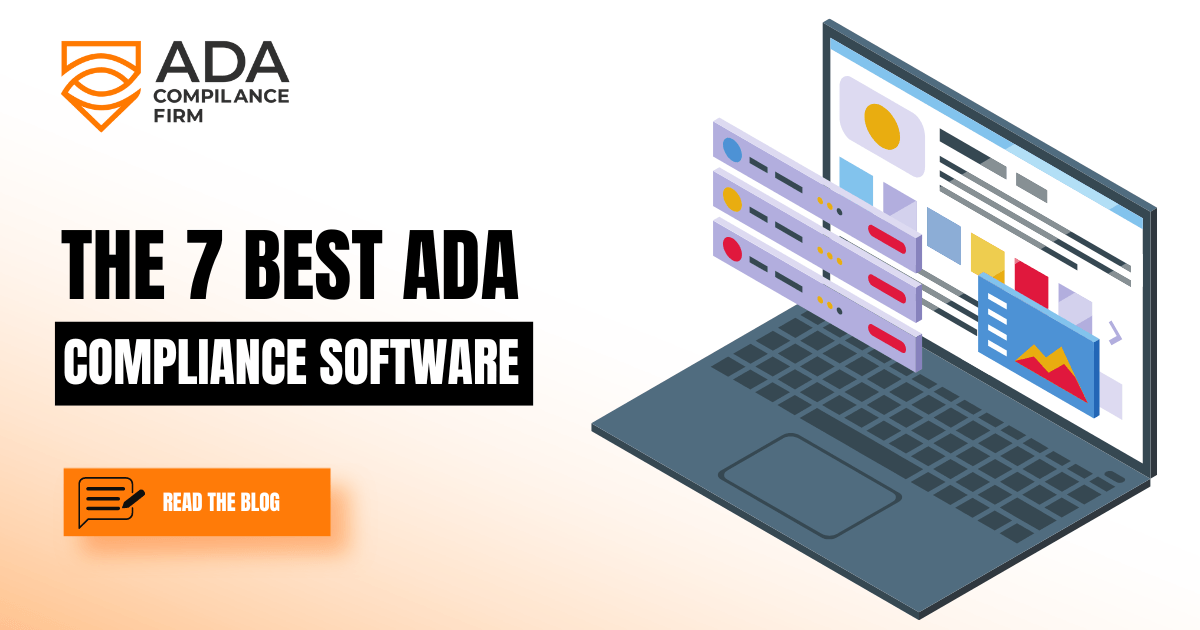
Web accessibility is not just essential. It’s a requirement for all businesses to ensure their digital content can be accessed by people living with disabilities. The Americans with Disabilities Act (ADA) is a law that prevents and enforces regulations against discrimination or discriminatory practices towards individuals with disabilities.
Policies and regulations are put in place to ensure businesses create inclusive web pages and content for people with disabilities. It’s essential that businesses design all their digital content, from websites to applications to comply with the rules and regulations set by the ADA and the Web Content Accessibility Guidelines (WCAG).
Many tools and software available can help business owners test their websites to identify any issues or aspects that are not in compliance and correct them as soon as possible. Choosing the best ADA compliance software can help you efficiently and effectively ensure your web content meets the ADA and WCAG guidelines. This list of the best ADA compliance software is a great place to start as you choose the best tools for your business.
Read more about ADA Compliance and why it's important for your business
here.
What is Web Accessibility?
Web accessibility is the practice of ensuring a website or web content can be used by all visitors, including those with disabilities or impairments. It’s an essential part of web development that requires businesses and website owners to recognize that people need the ability to interact with technology in unique ways to be able to access their content.
By ensuring your business complies with web accessibility guidelines and regulations, you can provide solutions that enable people with all abilities to engage with your digital content, tools, products, and applications. Read
this blog post to learn more about the ADA screen reader needed for your website.
Why is Web Accessibility Important?
It’s believed that 15% of the world’s population lives with disabilities or impairments. If your website restricts access, you limit the reach and impact your business, service, or product can provide. Every individual deserves the right to access and engage with digital content.
By making your website accessible, you make it easier to use for people with disabilities and limitations, such as:
- Vision impairment or blindness
- Learning disabilities
- Cognitive disorders
- Hearing loss or deafness
- Speech impairments
- Physical disabilities
Ensuring website accessibility removes barriers preventing individuals from navigating the digital world. Companies who ensure their website is accessible and in compliance protect against legal liabilities and can improve their brand image as they prioritize inclusion. Accessibility means leaving no one out, and everyone can view and experience any digital content without challenges.
Our company
ADA Compliance Firm is a 501(c)(3) Nonprofit that advocates for the blind, deaf, dyslexic, and more. If you'd like to support web accessibility for the disabled you can
donate here.
Understanding ADA, Section 508, and WCAG Compliance
There are three standards for website accessibility that refer to different parts of a website: The Americans with Disabilities Act (ADA), Section 508, and the Web Content Accessibility Guidelines (WCAG). Each of these is designed to ensure website content is accessible by all, but they do have differences to be aware of.
ADA – The ADA is a civil rights law that prohibits discrimination in every aspect of life, which includes technology. The ADA was passed in 1990 to ensure people with disabilities have the same rights as everyone else. At the time, the ADA did not encompass or fully grasp the evolution of the internet, which is why the WCAG was created.
WCAG – The WCAG was created in 2008 to describe standards developed by the World Wide Web Consortium (W3C). The WCAG gives companies a helpful resource to create websites that are accessible for users with disabilities and impairments. The WCAG is a go-to guide that businesses use to ensure their website is compliant. It is not a law but more a guideline that ensures compliance and is a useful checklist when complying with ADA standards.
Section 508 – Section 508 was created as part of the Rehabilitation Act and is a federal law. It requires federal agencies to develop, acquire, maintain, and use the information and communications technology that people with disabilities can use. These compliances are more for federal agencies and resources.
Who Needs to Ensure they Comply with ADA?
There are guidelines, rules, and laws put in place to ensure websites, applications, and content are accessible by all but not all businesses need to comply. There are three types of organizations that need to ensure they are within ADA compliance. These include state and local government agencies, private employers with at least 15 employees, and businesses that provide benefits for public use.
While only some businesses need to ensure they are in ADA compliance, it is a best practice to test and apply fixes to be more inclusive for all users. Being inclusive in your web content can improve your brand image, whether you're running a business on your own or have a purely informational website. If you are a smaller business that doesn't need to meet ADA compliance but hopes to grow, using ADA compliance software can help you check and apply accessibility standards.
Your website can be developed and maintained in a way everyone can use. If you own a website, consider having our team get your website ADA Compliant by viewing our
pricing plans here.
The 7 Best ADA Compliance Software
When selecting the best ADA compliance software, a few essential criteria are considered for each. The interface should be easy to use and understand as a user tests and assesses accessibility within their programs. They should be able to implement testing quickly and efficiently and be adaptable to changes throughout your website, app, or software development lifecycle. Each of these criteria was considered against the cost to ensure your business is getting the best return on investment with a high-quality web accessibility compliance software option.
1. UserWay
UserWay is a software that tests your website's accessibility and ensures it complies with the ADA and WCAG without needing to rewrite or refactor your website's code. The UserWay Accessibility Widget is just one of many solutions the AI-powered platform goes above and beyond ADA and WCAG 2.1 regulations.
UserWay supports several major website creation platforms to assist with even the smallest of businesses to ensure they are within compliance. The software's AI and machine learning ensures the best user experience while meeting compliance requirements. The automatic front-end and backend logic, along with the remediation layers, repairs issues, audits, and ensures compliance.
The software enables customization for different individuals and their unique needs for accessibility as they navigate a website or application. Users are able to customize text size and spacing, cursor size, pause animations, highlight links, invert colors or use dark contrasts. It can provide a reading guide and more to enhance the overall experience.
UserWay offers a free version that allows any business to use to test and review their website to ensure compliance with the ADA and WCAB to avoid any legal litigations that could occur. With the advanced version, users can access screen readers, keyboard navigation, a dictionary, headings, interactive elements, and more.
With UserWay, you can review reports and review real-time insights regarding usage and stats of the frequently used accessibility features that your visitors utilize. The enhanced user experience through UserWay software is hard to beat, especially for those with visual impairments.
Use our affiliate link to get the UserWay widget installed on your website by clicking here.
2. AudioEye
AudioEye assesses your website and evaluates your compliance with the ADA by giving you an accessibility score from 0 to 100. The software is designed to be written directly into your JavaScript on each website page. It automatically adjusts the pages to become ADA-compliant.
The AI system has the WCAG information directly built into the code to ensure all guidelines are included and checked. The AI checks every page for any issues that might impact a person who is visually impaired as they visit and navigate your website and make corrections. It also installs a feature that allows users to adjust the page's appearance based on their individual preferences.
AudioEye is a great software and can resolve around 75% of any accessibility issues on websites. They also provide a certificate of compliance to your company that assumes responsibility for any legal issues that could arise through the ADA.
3. accessiBe
accessiBe is a web accessibility software that offers two applications that help website owners become ADA-compliant: accessWidget and accessFlow, both powered by AI technology. ADA compliance is easily automated through the accessWidget installed directly on a business's website. The software can run checks every 24 hours and send a monthly compliance audit to ensure you stay up to date.
The accessWidget creates an interface for accessibility for visitors with disabilities to adjust the website's design and improve functionality. It fixes over 30 percent of the common barriers people with disabilities experience when visiting business websites. Users can adjust the content, color, scaling, alignment, font, and more to tailor the experience to their needs better.
On the backend, accessFlow is an all-in-one solution designed for developers and engineering teams to test, monitor, and remediate source code for optimized website accessibility. The tool provides information on improving accessibility through best practices. It offers source code snippets to ensure you only ship accessible software products.
4. Equally AI
Equally AI is an automated web accessibility compliance tool that allows you to monitor and test your website and its applications for website accessibility. The compliance ensures all features are compliant with all web accessibility guidelines per the ADA and WBAG requirements by law.
The user-friendly user interface provides a great experience as you navigate the tool. The interface provides a neat display to engage with your website and test your accessibility in specific scenarios.
Equally, AI also provides you with a dedicated team to support you through learning how to use and manage the tool to monitor and test your business's website for ADA compliance.
5. Level Access
Level Access is an accessibility management platform that you can use to review and assess issues on your website and test for ADA compliance. The browser extension allows you to test your website accessibility with a Manual Testing Wizard as you create and schedule scans on web pages.
The software generates reports that can provide you with your compliance status to allow you to find gaps and repair your website to make it more accessible. The report includes a rating for severity, noticeability, and traceability of your level of compliance and any violations and makes recommendations based on the findings. You'll be able to prioritize which issues require attention first.
The software includes educational components and a resource library that provides you with information to learn more about digital accessibility.
6. EqualWeb
EqualWeb is one of the leading web accessibility solutions that is simple to implement and is used by millions of websites around the world. EqualWeb ensures ADA compliance, WCAG 2.1 compliance, and even Section 508 compliance. The installation requires you to insert a single line of code to easily adapt to your website.
The machine learning capabilities analyze data to find the trends and patterns of accessibility issues that might occur within your website or content. It can analyze your website and introduce rules that fit your content, code, and style. The code fixes up to 95% of issues through the automated process, but a dedicated QA can perform a full review and manual audits to repair any compliance issues even more quickly.
7. Tenon
Tenon is an automated accessibility testing tool that works with both WCAG and Section 508 compliance. On the Tenon website, you can enter any URL to test. The tool will return a list of issues along with a description of the errors and the regulations it does not comply with.
While the free version is available to all, it only lists a few issues before you have to opt-in for the subscription to view all violations.
The software comes with plugins for browsers that enable each user to review the compliance status of any webpage you visit. Tenon is handy for websites that need automated accessibility testing for your website. It can also provide remediation services that can address and fix accessibility issues while the test is ongoing.
Get Your Website ADA Compliant
The ADA and the WCAG guidelines are in place to ensure that your business is in compliance with the regulations set up to protect disabled individuals to ensure inclusivity for all websites and applications. These software options will make your website accessible and help you comply with the regulation set up by the ADA.
Using ADA compliance software provides you with an essential tool to quickly identify compliance issues and correct them immediately. Many software solutions can also include information on designing and developing web content to create a more inclusive experience for all.
If you'd like our help getting your website ADA Compliant please
click here to reach out.
Join our newsletter
Recent Blog Posts
